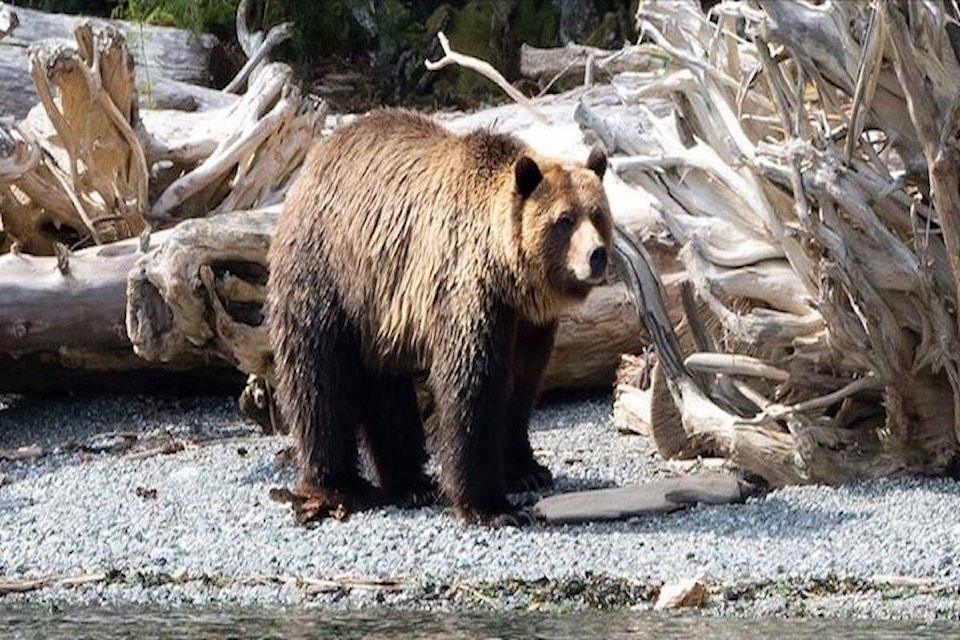Mali, a grizzly bear shot just days after an epic relocation from Hanson Island, will make a final journey today to burial grounds on First Nations territory in the Broughton Archipelago.
Mamalilukulla chief Richard Sumner confirmed that the bear’s burial will take place on Village Island after the B.C. Conservation Officer Service has returned the body.
Sumner was shocked to hear that the bear was shot to death on April 20, after it had been relocated on April 9. He says questions still remain about the circumstances of the bear’s death.
Mamalilikulla Guardian manager Jake Smith and Sumner had worked with conservation services, the provincial environment ministry, and non-profits agencies including the Grizzly Bear Foundation, to relocate the bear from Hanson Island.
Mali was shot by a citizen outside a remote cabin at an undisclosed location in the Broughton Archipelago, after the bear travelled 30 kilometres from the “isolated” area to which it had been relocated.
B.C. Conservation Officer Service concluded the investigation by declaring the shooting as an act of self-defence.
READ MORE: Grizzly bear just relocated from Vancouver Island shot dead
While Sumner and his nation members did not call for further investigation, the chief felt the information provided about the circumstances of Mali’s death was limited, and there were “unanswered questions.”
Sumner said that he would like to know who shot the bear and where. He also wondered how the person managed to get in the position where they felt their life was in danger.
According to Sumner, the bear apparently came back after it was scared off once. If so, the question is whether the person was waiting for the bear to return, he said.
Ben York, the conservation officer who handled the case, said there was no reason to believe the bear was shot for any reason other than self-defence. He added that there’s really no way to predict bears’ behaviour.
The bear was relocated to Hoeya Sound in Knight Inlet, famous for grizzly bear tours and sightings, after consultation with provincial biologists and First Nation members.
It was done “hastily,” said Sumner, following negotiations with conservation officers who would have otherwise “put down the bear” after it turned up on Hanson Island searching for food.
Sumner and Smith decided upon moving the bear to Hoeya Sound because it is traditional bear habitat.
The area recorded a severe salmon shortage last year and images of emaciated grizzlies made news. Smith and fellow Mamalilikulla members addressed this shortage last year by feeding more than 500 salmon to the bears in the vicinity.
But despite another seasonal food shortage in the area, Mali was moved to Hoeya Sound because Smith felt it would be safe there.
Food scarcity in bear habitats is also why bears are wandering further from their usual territory, said Smith, adding that these are red flags that need to be addressed by authorities.
“We can move these animals all around the place, but if there is no food source then all efforts will fail,” said Smith.
For Sumner too, it was a lesson learned. In future, relocation must be accompanied by after-care to see how the animal is adapting to its new environment, he maintained.
READ ALSO: After grizzly spotted in Sayward, mayor warns not to come searching for the bears
